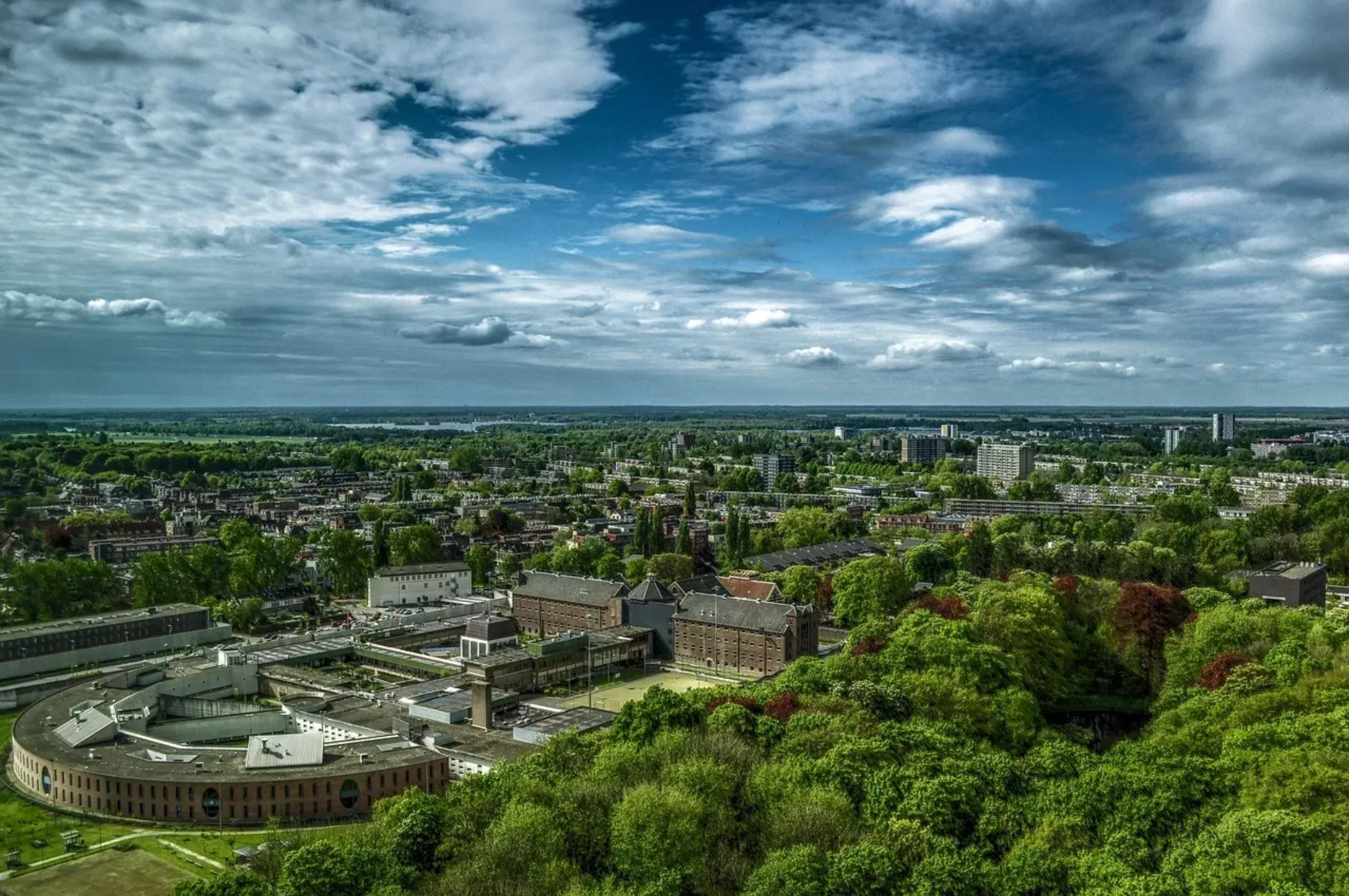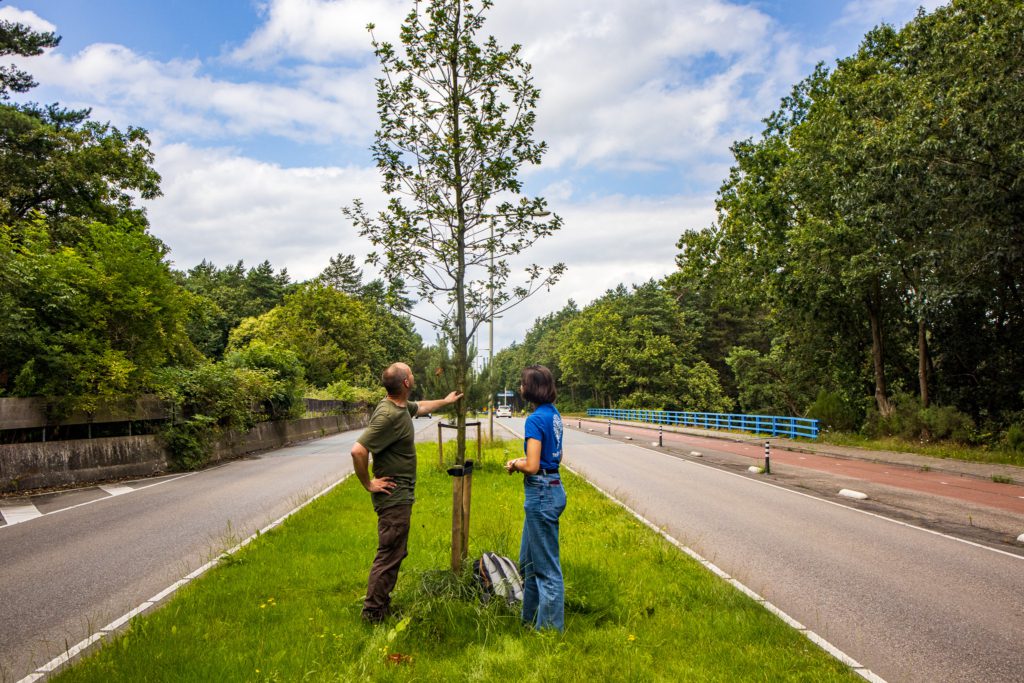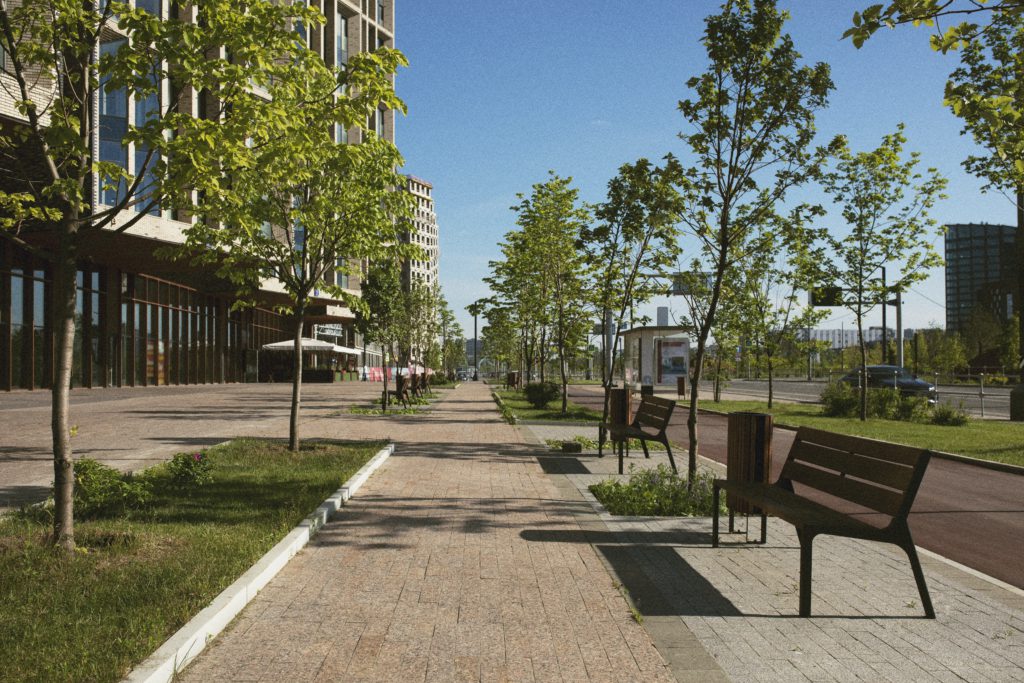Paving out, greenery in: this is why our cities need more trees
21 July 2025

21 July 2025
In the 32 larger municipalities in the Netherlands, more than half of the neighborhoods are ‘paved over’. That has to change, because more greenery in cities isn’t a luxury, but a necessity. Trees create livable cities by providing clean air, cooling on hot days and reducing flooding. That’s why Trees for All is working across the Netherlands to green our cities: from streets and squares to business parks and hidden corners.
Trees are multifunctional, making them essential in our neighborhoods and cities:
In short, a city with trees is healthier, safer and better resistant to the effects of climate change, such as extreme heat and heavy rainfall.
Despite of this long list of benefits, most neighborhoods in our country aren’t green enough, according to research of Natuur & Milieu (2024). In the 32 largest municipalities in the Netherlands, 1,104 neighborhoods are ‘paved over’, which is more than half of the total number of neighborhoods. In the four biggest cities (Amsterdam, Rotterdam, The Hague and Utrecht) it even amounts to 70%.
This implies that less than 75 square meters of green per residence is available and/or that there are no uninterrupted green areas of at least one hectare. In short, in 2024 about 3.6 million people were living in a paved environment within the 32 largest municipalities. We would like this to change, of course!
All over the Netherlands we are working to plant more urban greenery. Your donation helps make this possible. With your support, we can plant more (edible) forests, bird-friendly areas, hedgerows, and parks in cities. We also transform paved squares into green spaces, revitalize forgotten corners, and add greenery to business parks and main roads.
We are doing (and did) this in the municipalities of Amsterdam, Almere, Eersel and Bergen op Zoom. There are plans to reduce heat stress within the city of Utrecht by laying out cool spots: shady places with trees and shrubs. And we see a lot of opportunities in greening up business parks. Thanks to your gift we can accelerate these efforts and gradually make the Netherlands greener, step by step.

You might be wondering: isn’t greening the city the municipality’s responsibility? Well yes, basically it is. But it is a highly complicated and gigantic job. Municipalities are willing to do it, but do not always have enough money and capacity to realize their greening plans. That is exactly where we jump in – thanks to your support.
Of course, we don’t just plant greenery random. We ensure that the right tree is planted in the right place. This means selecting tree and shrub species that suit our changing climate and have a positive impact on soil and biodiversity. We also follow the 3-30-300-guideline, a science-based approach for green cities:
By following this principles, we help create green and livable cities, with less heat stress, reduced risk of flooding, more biodiversity and cleaner air.
